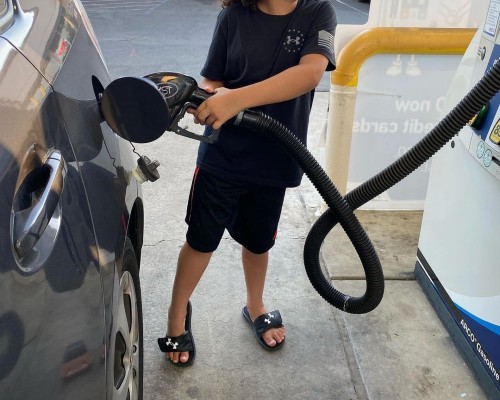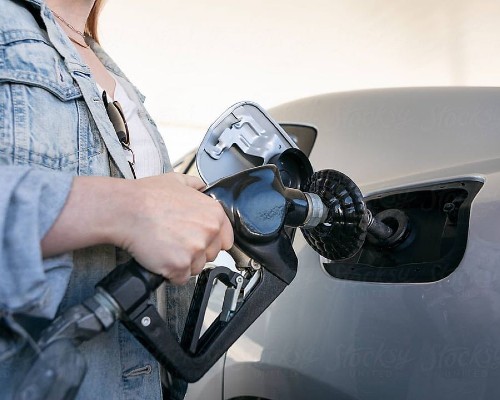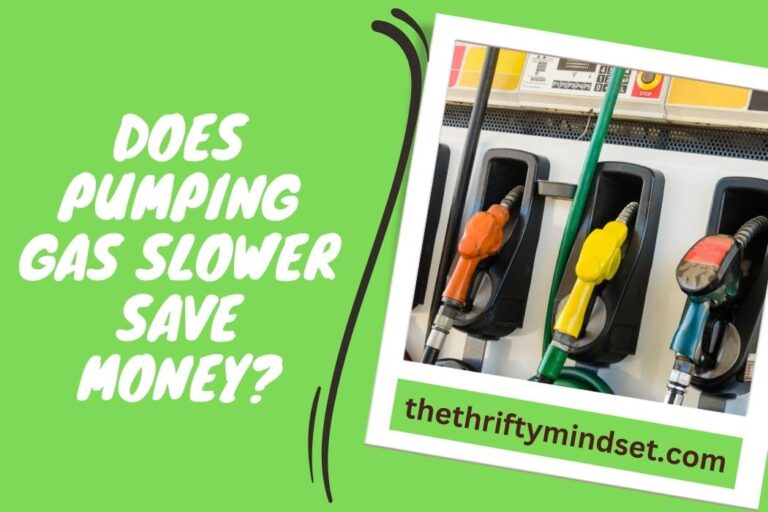Ah, the gas station—a place where the aroma of fuel mingles with the collective sighs of motorists staring at ever-rising prices. You’ve probably heard the whispered advice between drivers, a secret passed down like an heirloom: “Pump your gas slower, and you’ll save a few bucks.”
It’s a compelling thought, especially as you watch the numbers on the pump spin faster than a slot machine, each click a dent in your wallet.
In an era where gas prices seem only to know one direction—up—it’s no wonder that such a simple, almost ritualistic, act gains traction.
Could this be the lifehack we’ve all been waiting for? A small rebellion against the system that leaves us feeling a little less powerless?
Or is it just another myth, a placebo effect that makes us think savvy but leaves us just as broke?
So, here’s the million-dollar question we’re unpacking today: Is the claim that pumping gas slower saves money fact or fiction? Buckle up; we’re diving deep into this fuel-filled enigma.
Does Pumping Gas Slower Save Money

Absolutely, let’s get straight to the point. Yes, pumping gas at a slower rate saves you money. How so? Well, it’s all about evaporation. When you pump gas quickly, the increased speed can lead to more evaporation, causing you to lose some of the fuel you’re paying for.
By pumping slower, you minimize this evaporation, ensuring that more gas actually ends up in your tank. A study by the Department of Energy found that slower pumping rates can indeed minimize fuel evaporation, thereby saving money.
So, the next time you find yourself at the pump, consider taking it easy. Your wallet might just thank you.
Potential Discrepancies in the Fuel Metering System in Fast vs. Slow Pumping
- When fuel is pumped rapidly, there’s a higher chance of air bubbles or vapor forming in the fuel line. This can lead to the metering system registering these bubbles or vapor as actual fuel, potentially causing an overestimation of the amount of fuel dispensed.
- Slow pumping, on the other hand, reduces the likelihood of air or vapor formation, leading to a more accurate measurement. However, if the pump’s metering system is not well-maintained or calibrated, slow pumping can still result in discrepancies.
- Additionally, the pressure variations between fast and slow pumping can affect the accuracy of some flow meters. For instance, certain types of meters might not measure low flow rates as accurately as higher flow rates.
- External factors, such as temperature fluctuations, can also play a role. For example, fuel expands and contracts with temperature changes, which can affect the volume dispensed.
While this is not directly a result of fast or slow pumping, the rate of pumping can influence the temperature of the fuel, especially if the fuel has been stored in above-ground tanks exposed to sunlight.
Economic Implications of Pumping Gas Slower

1. Analysis of Potential Cost Savings from Pumping Slower
Efficiency: Pumping fuel slower can reduce the formation of air bubbles or vapor in the fuel line. As a result, consumers might get a more accurate volume of fuel for the price they pay, leading to potential cost savings over time.
Reduced Evaporation: Faster pumping can lead to increased fuel temperature due to friction, which can result in more evaporation. Evaporated fuel is essentially money lost. By pumping slower, the fuel remains cooler, reducing the amount that evaporates and ensuring consumers get more for their money.
Metering Accuracy: As mentioned previously, the rate of pumping can affect the accuracy of some flow meters. Pumping slower can lead to more accurate measurements in certain cases, ensuring that consumers are not overcharged for the fuel they receive.
2. Real-World Scenarios and Examples
Scenario 1: Consider a motorist who fills up their tank once a week. If they consistently pump fuel rapidly and experience a minor overestimation of 1% due to metering discrepancies and evaporation, they might be overpaying by a small amount each time. Over a year, this could amount to a significant sum.
Scenario 2: In regions with high temperatures, the evaporation rate of fuel can be substantial. A motorist in such a region who chooses to pump fuel slower might save a noticeable amount over someone who pumps quickly, simply due to reduced evaporation.
Example: A study or experiment could be cited where two identical vehicles are filled up multiple times, one with fast pumping and the other with slow pumping. Over several refills, the vehicle with slow pumping might require less frequent refills, indicating more efficient fuel transfer and potential cost savings.
Real-World Testimony: Some motorists might share personal experiences or observations, noting that they seem to get more miles per tank when they pump fuel slowly compared to when they pump rapidly.
Other Best Practices for Pumping Gas to Maximize Savings

1. Use Consistent Stations: Stick to gas stations that maintain their pumps well. Well-maintained pumps are more likely to give accurate measurements.
2. Pump During Cooler Times: Fuel expands and contracts with temperature. Pumping during the cooler parts of the day, such as early morning or late evening, can reduce evaporation and give you more fuel for your money.
3. Avoid Topping Off: Once the pump automatically shuts off, avoid the temptation to top off. This can lead to overflows and wasted fuel.
4. Monitor Fuel Efficiency: Keep an eye on your vehicle’s miles per gallon (MPG) to ensure you’re getting the most out of your fuel. If you notice a drop in efficiency, it might be time for vehicle maintenance.
Safety Considerations When at the Gas Station
1. No Smoking: Never smoke at a gas station. Fuel vapors can ignite, leading to dangerous fires.
2. Turn Off the Engine: Always turn off your vehicle’s engine when refueling. This reduces the risk of any sparks or heat sources igniting fuel vapors.
3. Avoid Cell Phone Use: While the risk is minimal, it’s a good practice to avoid using cell phones while pumping gas to prevent any potential static electricity discharge.
4. Use the Correct Fuel Type: Always ensure you’re using the correct fuel type for your vehicle. Using the wrong fuel can damage your engine and lead to costly repairs.
5. Use the Pump’s Hold-Open Latch: If the pump has a hold-open latch, use it instead of trying to wedge the handle open with other objects.
Final Verdict
While we’ve delved into the mechanics, economics, and even the safety aspects of pumping gas, one unique angle that’s often overlooked is the psychological benefit.
The act of pumping gas slower not only potentially saves you money but also grants a sense of control in a world where fuel prices are anything but stable. It’s like hitting two birds with one stone—more gas in your tank and more money in your pocket.
It’s a life hack that’s easy to do and could save you a pretty penny—or at least give you the satisfaction of knowing you’re not getting played.
I’m Grayson Watson, your frugal companion and the brain behind this money-saving extravaganza. Strap yourself in, because we’re about to embark on a wallet-friendly adventure like no other. Learn More!

